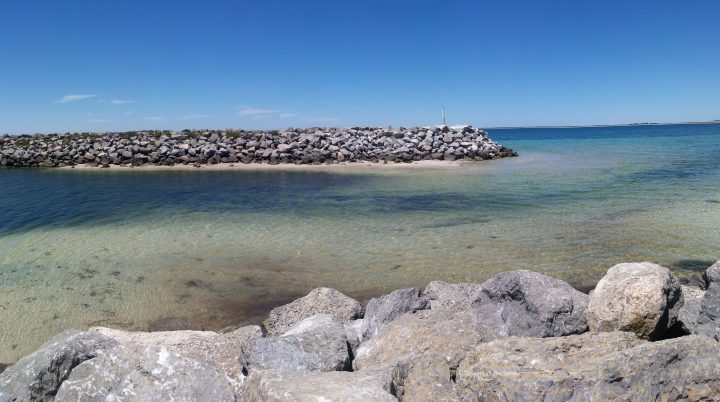- Home
- Environmental Themes
- Sea
- Pressures and Responses
- Habitat Modification
Habitat Modification
Marine Development
Pressures
- Construction of breakwaters, jetties, ports, marinas and harbours.
- Dredging of solid matter either when constructing marine infrastructure or removing build-up of solid matter, for example, sand, dead seagrass or algae from boat ramps or marinas.
Impacts
- Breakwaters, jetties, ports, marinas and harbours:
- provide substrate for the settling of invasive species
- disrupt coastal processes, which may lead to sand or seagrass wrack build-up or erosion
- potential impacts from rubbish from people who use these facilities.
- Dredging and sand movement may result in the following impacts to the marine environment:
- increases turbidity by mobilising sediment
- risk of disturbing pollutants during removal of solid matter
- potential impacts to seagrass and aquatic animals
- physical removal of seagrass and algae
- translocation of pests and diseases via depositing of spoil or movement of dredge infrastructure
- coastal erosion.
Responses
- DEW is currently reviewing options for long-term sand management along our metropolitan coasts. Three options have now been presented to the community for their consideration. Sand transfer is already undertaken from Glenelg to Kingston Park to reintroduce sand back to beaches and dunes at various locations. This pipeline pumps up to 100,000 m2 of sand each year. A sustainable approach for managing sand movement that protects our beaches along the entire Adelaide coastline needs to be considered.
- A guideline for dredging and codes of practice have been developed by the EPA for vessel and facility management and material handling on wharves. Dredging, bulk shipping facilities, and marina and boating facilities also require environmental authorisation from the EPA.
- National Ports Strategy to support sustainable development and use of ports.
Opportunities
- There has been recent interest in establishing offshore wind farms in South Australia. Environmental impacts from any proposed off-shore wind farms on ecosystems and other aquatic industries such as the fishing sector need to be carefully considered and assessed to ensure that negative impacts are minimised. The wind farm recently proposed for along the coastline adjacent to Port Macdonnell was opposed by the South Australian Government due to potential impacts to local industries and the environment.

Coastal Development
Pressures
- Coastal development including housing and marine infrastructure.
- Excavation causing exposure of acid sulfate soils that occur naturally in coastal systems – predominantly in wetlands and intertidal sand flats.
Impacts
- Encroachment of development impacting sand dunes.
- Loss of seagrass from increased runoff of stormwater (nutrients and sediments) into the marine environment.
- Native vegetation clearance (including reef and seagrass) which removes important habitat for species.
- Light pollution which may impact nocturnal species that live within the dunes.
- Acid sulfate soils disturbed during construction can impact water quality and kill aquatic plants and animals.
Responses
- Assessment of development proposals by the Coast Protection Board, Native Vegetation Council and EPA.
- State Planning Policy 13 (Coastal Environment) was developed within the State Planning Policies in 2019 under the Planning, Development and Infrastructure Act 2016. This policy aims to enhance the coastal environment and reduce risks to coastal developments.
- The National Water Quality Guidelines provides information and guidance on how to avoid or manage acid sulfate soils.
- An assessment and mapping tool is available to identify where these soils may be found.
Opportunities
- Proactive identification of appropriate locations for coastal development proposals, in other words, GO and NO-GO zones.
